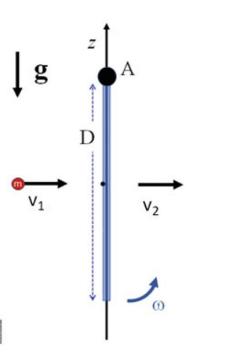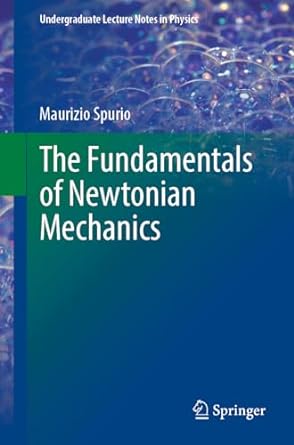A homogeneous sheet of mass (M=8.0 mathrm{~kg}), side (D=50 mathrm{~cm}) and negligible thickness can rotate without friction
Question:
A homogeneous sheet of mass \(M=8.0 \mathrm{~kg}\), side \(D=50 \mathrm{~cm}\) and negligible thickness can rotate without friction about the horizontal axis passing through point \(A\) and coincident with the side, perpendicular to the plane of the sheet (see Fig. 12.13. Gravity acts along the \(z\) direction, downward. The sheet, initially at rest in its equilibrium position, is struck in the center by a projectile of mass \(m=40 \mathrm{~g}\) moving with velocity \(v_{1}=300 \mathrm{~m} / \mathrm{s}\) perpendicular to the sheet. After piercing the slab, the projectile continues, on the same trajectory, with speed \(v_{2}\); the slab goes into rotation with angular speed \(\omega=3.0 \mathrm{rad} / \mathrm{s}\).
1. Show that the moment of inertia of the slab with respect to the horizontal axis passing through \(A\) is \(M D^{2} / 3\), regardless of the value of side \(H\).
2. Determine the value of the speed \(v_{2}\).
3. Determine the maximum inclination \(\theta_{\max }\) of the plate with respect to the equilibrium position, \(\theta=0\), shown in the figure.
4. Calculate the mechanical energy lost in the collision.
5. Is linear momentum conserved? Discuss what phenomenon, if any, must be considered for the total linear momentum to be conserved.
Fig. 12.13

Step by Step Answer:






